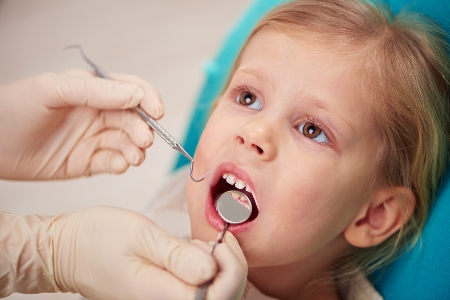Children in care have twice as many urgent dental health needs than the general child population
Published: 31 August 2017
Children in care, including those in foster and residential care, have double the rates of urgent dental treatment and are half as likely to attend dental services as the general child population.
Children in care, including those in foster and residential care, have double the rates of urgent dental treatment and are half as likely to attend dental services as the general child population. Children in care are also twice as likely to have a tooth extraction under general anaesthetic.
A new study led by the University of Glasgow and published in the journal Archives of Disease in Childhood, has found that there are stark differences between the dental health of children who are looked after in care and those who are not.

However, the researchers caution that they have “been unable to disentangle” whether this contrast in child dental health and access to services, is as a result of factors that lead to care in the first place, or whether the State is failing to fully look after children once they are in the care system.
Key findings
• 49% of children in care do not attend the dentist regularly, in comparison with 38% of the general child population (GCP).
• 67% of 5 year-olds in care have dental needs compared with 36% in the GCP.
• 23% of 5 year-olds in care has urgent dental needs including severe dental decay or dental abscess, compared with 10% of the GCP.
• 75% of 11 year-olds have dental needs compared with 58% of the GCP.
• 7% of 11 year-olds in care have urgent dental needs compared with 2% of the GCP.
• 9% of children in care have had a tooth extraction under general anaesthetic compared with 5% of the GCP.
Childhood dental treatment needs – particularly when urgent or requiring dental extraction under general anaesthesia – is an early marker of poor physical health. Further, as dental decay is readily preventable, urgent dental care needs in children are also a marker of failure of preventative care services, or poor use of those services.
The research compared 622,280 children in the general population with 10,924 who were currently or recently looked after, which including foster, kinship and residential care, as well as those remaining with their families in compulsory home supervision.
Dr Alex McMahon, lead author of the study from the University of Glasgow Dental School, said: “This is the first population study of its kind. We utilised the robust national datasets and data linkage expertise we have in Scotland to investigate the health of looked after children compared with the general child population. We used dental health and care as an exemplar topic, as all children should have regular access to routine preventive dental services.
“We found that the dental needs and care of children in care were significantly worse than with those children not in care. We were also able to show for the first time that these differences were not explained by standard measurable socioeconomic factors”.
Dr Graham Connelly of CELCIS (Centre for Excellence for Looked After Children in Scotland), a member of the research team, said: "The research confirmed what we had suspected: looked after children have poorer dental health and lower uptake of dental health services than the general child population. Dental health varies with placement type. It is best among children in foster care and poorest among those who remain in the family home with children's panel and social work support. We are pleased that discussions about addressing this have already begun.”
Professor David Conway, Professor of Dental Public Health at the University of Glasgow Dental School, said: “The national Childsmile programme is making strides in improving the oral health of children in Scotland. These findings are a stark reminder of the need to ensure we need to focus our efforts to ensure it reaches the most vulnerable children.
“This is going to need even further joined up work between health and social care services. We have had to employ complex methods to look at the health of looked after children. One way this could be improved would be for social services and NHS services to use a single identifier number such as the Community Health Index.”
Enquiries: ali.howard@glasgow.ac.uk or elizabeth.mcmeekin@glasgow.ac.uk // 0141 330 6557 or 0141 330 4831
First published: 31 August 2017
<< August

